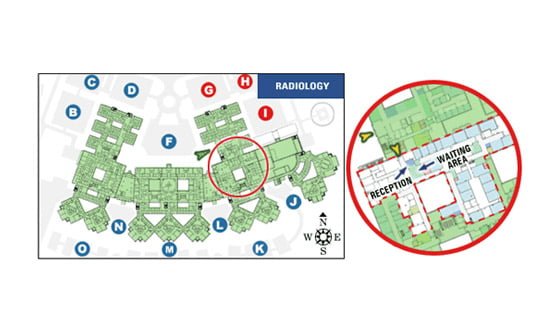Examining: Changing PACS at Norfolk and Norwich
- 14 February 2013

Norfolk and Norwich University Hospitals NHS Foundation Trust is six months into its new picture archiving and communications system contract with Fujifilm.
And its PACS and radiology IT manager has some simple advice for trusts that are considering their options as the national PACS and RIS contracts come to an end.
That piece of advice is to start early – and to make sure that all angles are covered during the procurement and project implementation process.
“You can’t start early enough. You need to be well prepared to make sure that you cover all bases,” says Maxine Clarke.
“Planning is key. Make sure your project plan is comprehensive. Stick to your project plan and try not to condense or steer away from it.”
From PFI to DIY
Norfolk and Norwich was not, itself, part of the National PACS Programme that was added to the National Programme for IT in the NHS a decade ago, and which is now coming to an end.
Instead, the trust implemented what was, at the time, an advanced PACS/RIS system as part of a spectacular private finance initiative rebuild of its main hospital.
Even though the trust came to be seen as a digital imaging pioneer, Clarke and her colleagues still had to go through the lengthy process of securing a new PACS supplier in 2011, when the ten-year GE Healthcare contract came to an end.
At the end of that process, it awarded a £3.3m contract to Fujifilm, and tied the new deal to the trust’s need to make 30% efficiency gains across the radiology department by 2013.
When the contract was announced in October 2011, trust chief executive Anna Dugdale said it had picked a “strategic partner with the vision and capability to improve our service and efficiency offering.”
As an example, she said she wanted to see the trust reduce its patient waiting time for routine diagnostic imaging. The main project work was signed off in July 2012.
Working through OJEU
During the tendering process, Maxine and her colleagues compiled a comprehensive list of more than 200 questions for suppliers to respond to.
They wanted to be assured that the new PACS would be as comprehensive as possible and that it would be flexible enough to meet their needs for a minimum of another ten years.
Clarke stresses that going out to tender using the Official Journal of the European Union is a lengthy process, but essential to make sure that all the rules of procurement are met.
As a result of its OJEU process, which was led by an in-house procurement department, Norfolk and Norwich received documents from 11 potential suppliers.
These were reduced using a specific elimination process to a shortlist of five companies.
The final selection stage involved on-site demonstrations and a site visit to a trust that was already using a Fuji Synapse PACS to provide an up-and-running example of the PACS in action.
Clarke says that because suppliers can be quite specialist in their service provision, planning ahead is essential.
“We were looking for a PACS which had all the functionality we needed, met our standards, would take us into the next decade, suited all users and was within budget – quite a big remit,” she acknowledges.
Big and comprehensive
Norfolk and Norwich is a big outfit, and the radiology department is one of its biggest departments. The trust’s website says that it carries out approximately 300,000 diagnostic examinations every year.
More than 250 staff work in the department and in a satellite department at the Cromer District Hospital. And the trust has just established one of the country’s first radiology academies.
More than 3.2m images had to be migrated into the new system, which covers the entire trust, including the Cromer site and the radiology academy.
The Fujifilm contract included the installation of 77 workstations and incorporates all imaging modalities, including computed tomography, computed radiography, mammography, orthopaedic, nuclear medicine and dental medicine.
Following the contract award, the trust appointed GHG to integrate TalkingPoint speech recognition into the system, which eliminates a lot of repetitive barcode scanning, and comes with tools to improve workflow and so efficiency.
The radiology department also uses computerised requesting for ward investigations, and plans to make this system available to its outpatient clinics and GP surgeries in due course.
Clarke says it was the breadth of functionality and, new “bells and whistles”, which appealed to the clinical users of the new PACS.
Many companies can provide a PACS, she argues, but it is the detail behind the system in terms of efficiency, archiving, reporting functionality, and 3-dimensional software that can make the difference.
Start now, if not sooner
From her position as an administrative lead, she places importance on the processes in the outline business specification stage of the procurement process. “Include as much detail as you need, but also cover items in a broad approach,” she says.
“Encompass the complete range of processes from administrative functions, radiographic imaging requirements, reporting and clinical front end user functionality. This will help you to get the system that suits your needs."
However, she says that after trusts have identified their supplier of choice, there is a lot of hard work to agree and stick to a project plan. It is vital to work closely with a project manager and all the stakeholders to deliver on time.
Once again, she emphases that trusts thinking of going through a similar process need to allow enough time for forward planning and all the time elements of a tender and implementation process. That’s why her message is start now, if not sooner.




